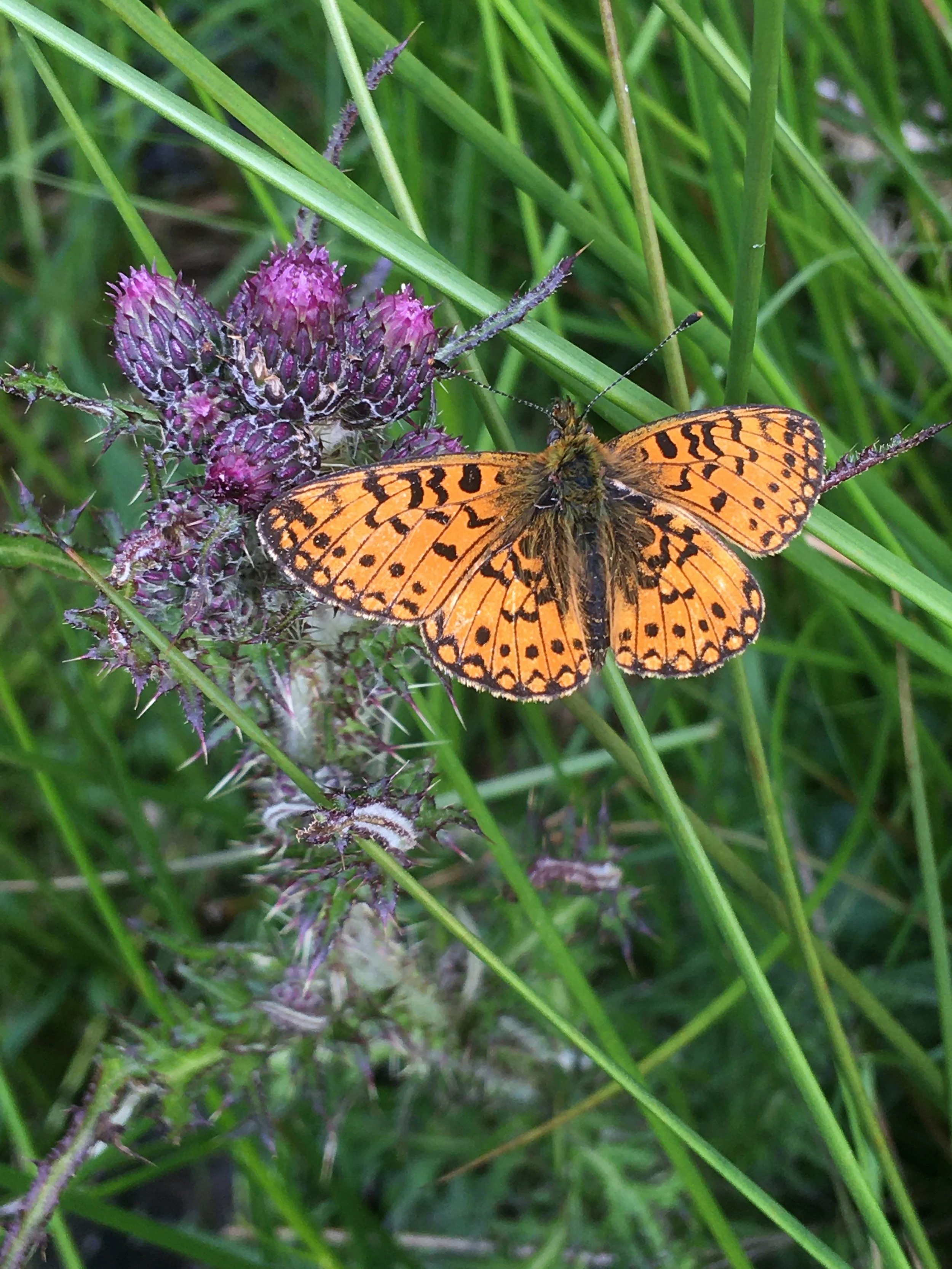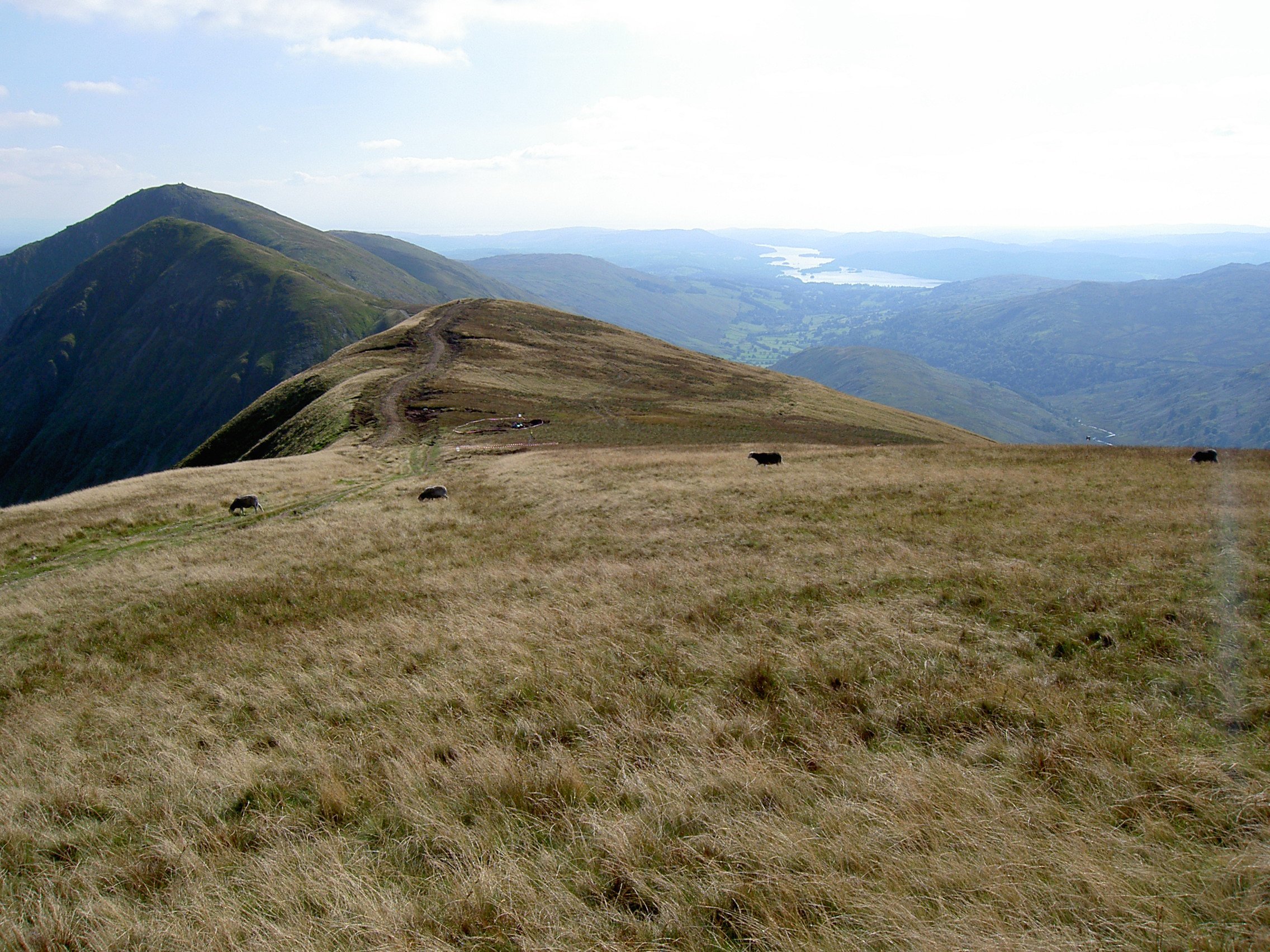
Where are we working?
This is a national project that is sharing learning from four areas: Shropshire Hills, Yorkshire Dales, Dartmoor and here in the Lake District.
The Lake District commons that are part of our project are:
• Bampton Common (grid ref NY472161)
• Derwent Common (grid ref NY231170)
• Kinniside Common (grid ref NY085116)
What are we working on?
We’re working with commoners and lots of other people to produce ‘commons visions’ – it’s our way of mapping out and delivering good things for the public, heritage and nature across the Lake District. This includes:
• Creating a Commons Proofed Farm Carbon Calculator and using it to help commoners reduce their carbon footprint.
• Archeological Investigations of England’s highest Roman road on Bampton Common.
• Surveying upland butterflies across the commons to improve their management.
Helping commoners manage bracken for butterflies, birds, plants and commoning.
• Working with commoners in the lake district to develop a training package for them to record and monitor public benefits and deliver the SFI moorland standard.
How to enjoy the Lake District’s commons
Upland commons are free for everyone to access and enjoy. Some of the best places to experience commons and their iconic views are on the hills and mountains of the Lake District.
We’re sharing just a few ideas on how you can enjoy your day and notice why these special places are so important in responding to some the challenges we face in the 21st century.
-
There’s over a million hectares – that’s over 247 million football pitches – of common land in England.
These spaces are found in National Parks and Areas of Outstanding National Beauty across the country.
Upland commons are free for everyone to access and enjoy and some of the best places to experience them and their iconic views are on the hills and moors of Devon, Shropshire Hills, the Lake District and the Yorkshire Dales.
Upland commons aren’t just picture perfect either. They bring a whole range of other benefits. Some of these are easy to spot and some of which can take you a little more time to notice.
There are tens of millions of day trips to common land each year and visitors make a significant contribution to the rural economy through tourism.
Planning a trip to Devon, Shropshire Hills, the Lake District or the Yorkshire Dales? Here’s just a few ideas on how you can enjoy your day and notice why these special places are so important to some of the challenges we face in the 21st century.
-
Step out on foot onto upland commons and you’ll experience beautiful landscapes. You’ll be rewarded with some of the most iconic views in the country. Try a day in the mountains on Catbells in the Lake District or Brant Fell in the Howgills.
-
Look out for sources of water. Paddling in a river, stream or a waterfall isn’t just good fun. This could be your future drinking water ¬– 10% of Britain’s water supply comes from upland commons.
-
There are 3,000 scheduled ancient monuments protected on British commons. They include stone circles, standing stones and roman camps. Spend your day in the outdoors, learning about history.
-
Commons support a greater diversity of wildlife than any other type of farmland. Try bird spotting – you’ll find the Dartford warbler in the south of the UK and the curlew in the Lakes and the Dales.
-
You’ll sometimes need more of a trained eye to spot these, but commons are filled with healthy peat bogs. These are areas of soil that are wet and they are covered in plants that rot down to form new peat. They trap millions of tonnes of carbon. They help us tackle climate change.
-
Many of the UK’s heritage breeds are closely associated with common land. You’ll get up close to different breeds of sheep, ponies and cattle.Each flock on the commons has an area of land where they stay without fencing, this is known as a ‘heaf’, ‘heft’ or ‘lear’. This way of shared land management is called commoning and has protected some of the UK’s most spectacular landscapes for a thousand years.

Commons in the Lake District
30% of the Lake District is common land and visitors spend over £950 million each year in the National Park. The Lakes is home to native Herdwick, Rough Fell and Swaledale sheep and native breeds of cattle that also graze the commons.
The Lake District is a cultural landscape and Cumbrian farmers live off the land, as they have done for centuries.
Cumbrian commons have over 700 flowering plants recorded, including nine orchids.
57% of the 15,500 ha of land in the Thirlmere and Haweswater catchments supply 650 megalitres of water to Manchester and the North West of England each day and these are registered as common land.
What’s happening on Lake District commons?
Commons Stories
Explore written and photographic portraits of people, short videos, audio clips, and reflections on events through the year and on some of the challenges of building sustainable futures for people and landscape in these special places.
Keira Booth , Lake District Project Officer
Keira has worked for the National Trust for a number of years; moving from a park and forestry ranger through to visitor facing and education roles, she has most recently been working as a project coordinator for 2 large conservation and farming projects in the Lake District. Keira is based in the Eden Valley in Cumbria.
Get in touch with Keira:
07977 840145






